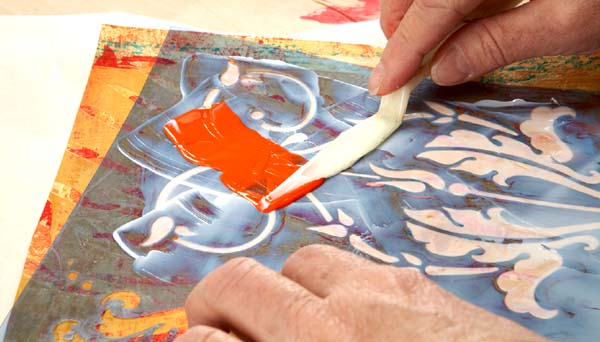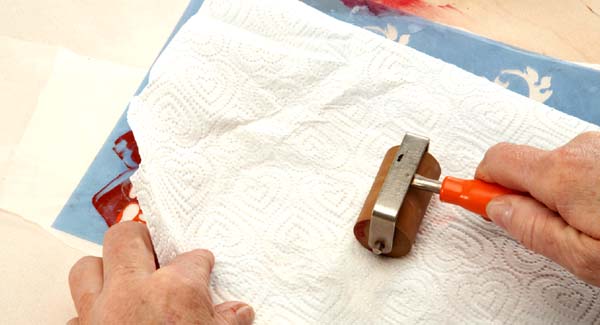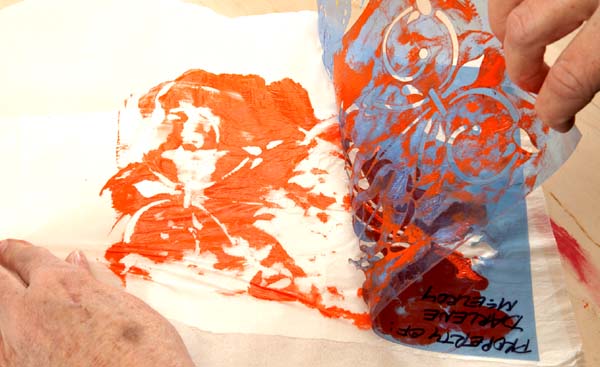Multiple Personality
Layer. layer and then add more layers. This is our mantra along with reuse, reuse and reuse. When you use your stencil, the residue paint or medium that is left transforms your stencil into a stamp. In addition to that, the paper or plastic that protects your work table and is slopped with paint is a potential collage or transfer element. Keep layering to get interesting results.
TECHNIQUE ONE: In Disguise: Crazy Easy Transfer with Polypropylene Plastic
Step 1
Make a multiple personality composition: Use your stencil as a stamp and press it onto a piece of polypropylene plastic, plastic bag or gampi paper.
Step 2
Let it dry and then layer more stencils and stamps onto the surface, overlapping different mediums, paints, etc. After a while you will have an interesting piece that you can then transfer to another painting.
Step 3
Apply soft gel gloss or polymer medium (because of its rough texture, canvas needs the gel) to the area of your painting or collage to which you wish to apply your transfer.
Step 4
While the gel is still wet, place the transfer paint side down and rub or press with a brayer to ensure good adhesion.
Step 5
Let dry completely. Depending on the surface you are transferring onto, this could take thirty minutes or three days.
Step 6
Carefully pull the plastic off and your collage is affixed.

TIME FOR CHANGE
Darlene Olivia McElroy
TECHNIQUE TWO: In Disguise: Gampi Paper Collage

Step 1
Apply soft gel over a stencil—this will ensure that the paint will adhere well and look crisp.

Step 2
Apply paint over the wet soft gel.

Step 3
Stamp the paint that is leftover on the stencil onto a piece of gampi paper. Brayer over the stencil to transfer as much of the paint as possible as neatly as possible.

Step 4
Peel the stencil from the gampi paper to reveal the transfer.
TECHNIQUE THREE: In Disguise: Irresistibly Absorbed
After doing the technique above, you can also use the stencil with the leftover paint on it as a stamp. Apply it directly onto a substrate.
Once the paint has dried, repeat the stamping process using a gloss gel. Overlap the applications.
Allow the gel to dry. This process can be repeated using other gels, paints and pastes to add as many layers as you’d like.
If you use both gels and pastes without paint added, you can glaze over the layers when they are dry. Different types of gels and pastes will absorb the glaze differently and the result will be varying hues of your paint color. Gloss, for example, will resist, while pastes will absorb.

